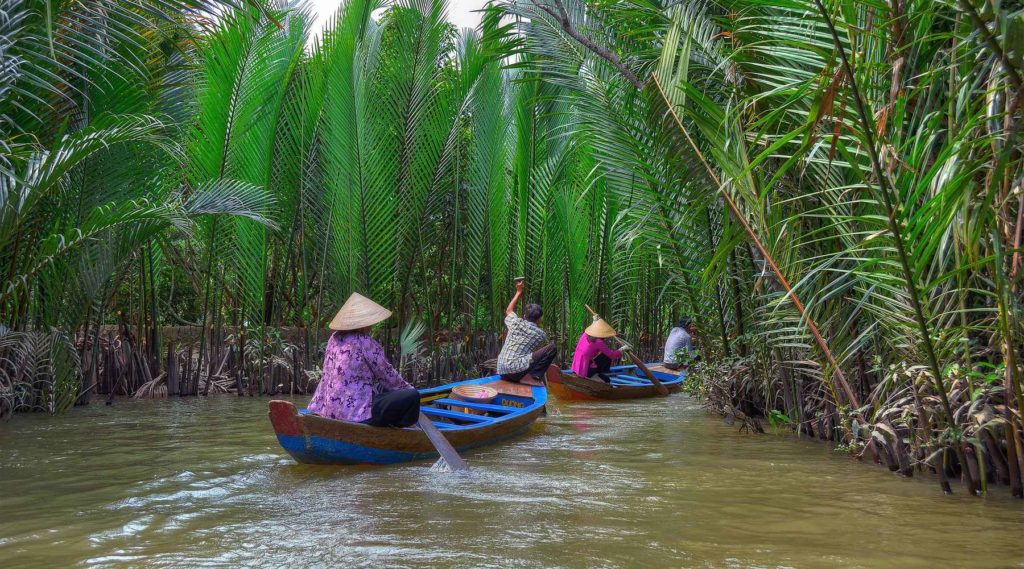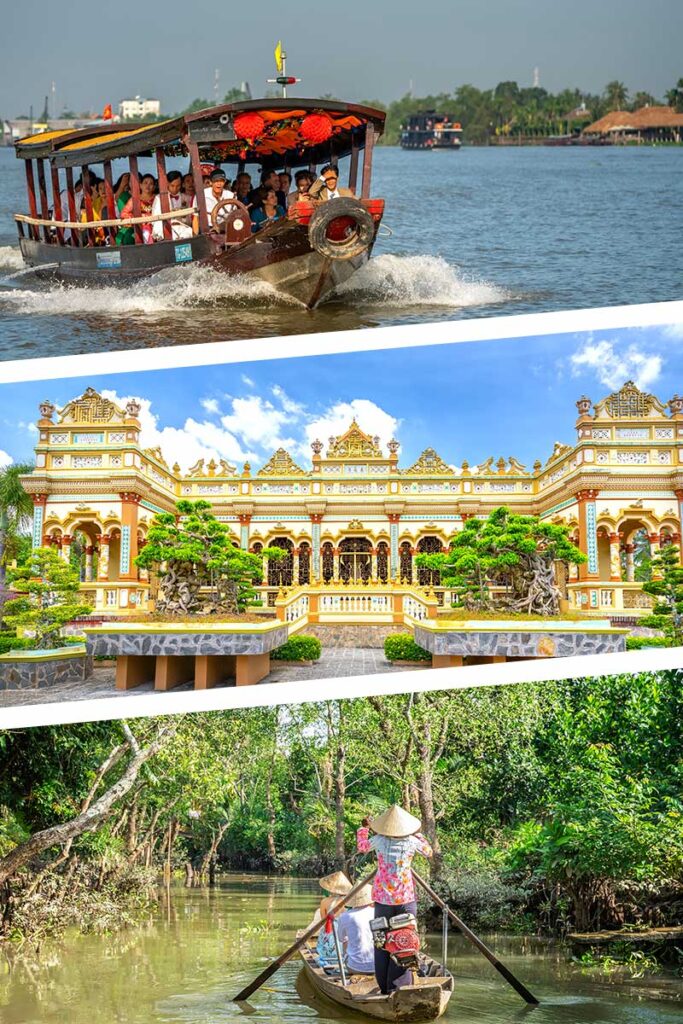My Tho – Gateway to the Mekong Delta
My Tho is the capital of Tien Giang Province, set on the banks of the Tien River, one of the Mekong’s main branches. Just 70–80 km from Ho Chi Minh City, it has long been the easiest entry point to the Delta, historically a trading hub linking Saigon with the fertile countryside. The flat landscape surrounding the city is covered with rice fields, coconut palms, and fruit orchards, while a web of canals connects villages and farmland.

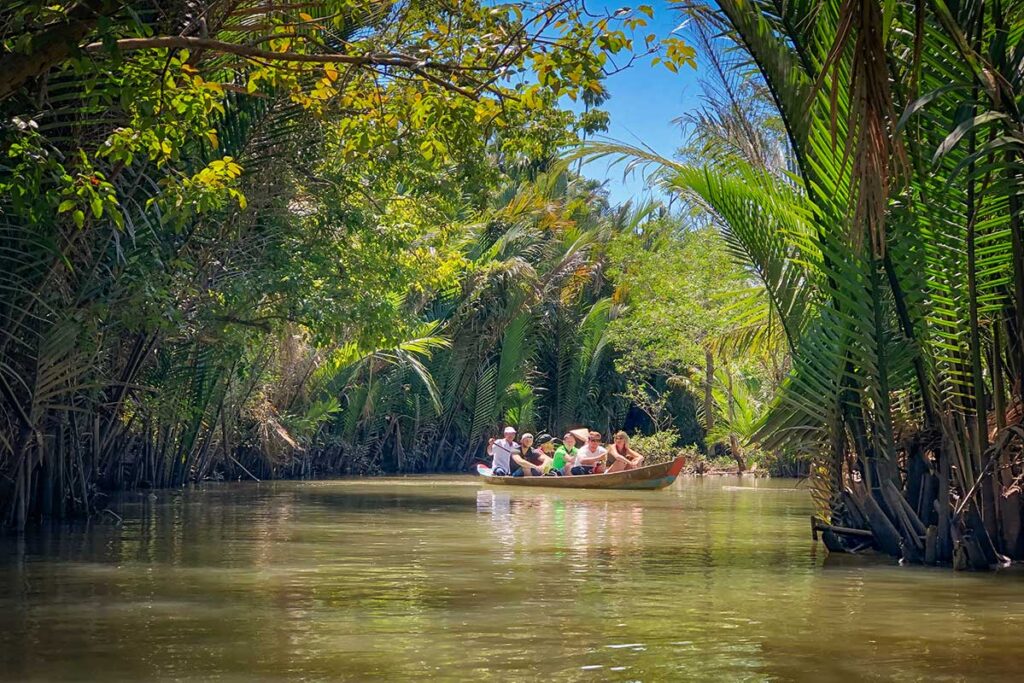
Life in My Tho revolves around its markets, riverfront, and Buddhist temples, with agriculture still at the core of the local economy. For travelers, the city serves mainly as a convenient base for short boat trips, island visits, and orchard stops, offering a quick glimpse of delta life before venturing deeper into the region.
Highlights & things to do in My Tho
When planning a visit, you’ll find a mix of sights in town and excursions on the river. The most popular things to do in My Tho focus on boats, orchards, and nearby islets, but there are also smaller city landmarks and side trips worth knowing about.
Below is an overview of the main highlights, with honest notes on what to expect so you can decide which experiences fit your trip.
1. My Tho town
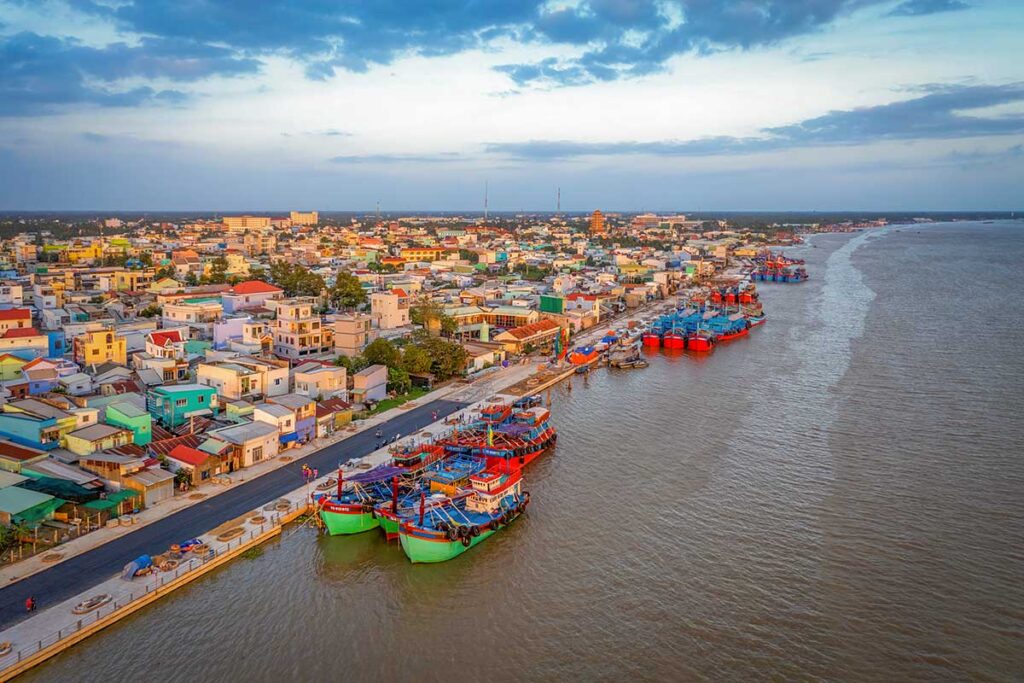
My Tho is a provincial capital that feels more like a large riverside town than a city. The streets are busy with shops, motorbikes, and food stalls, while life along the riverfront centers on fishing, markets, and ferry piers. It’s not a place where most travelers linger long, but it provides a practical base for boat trips.
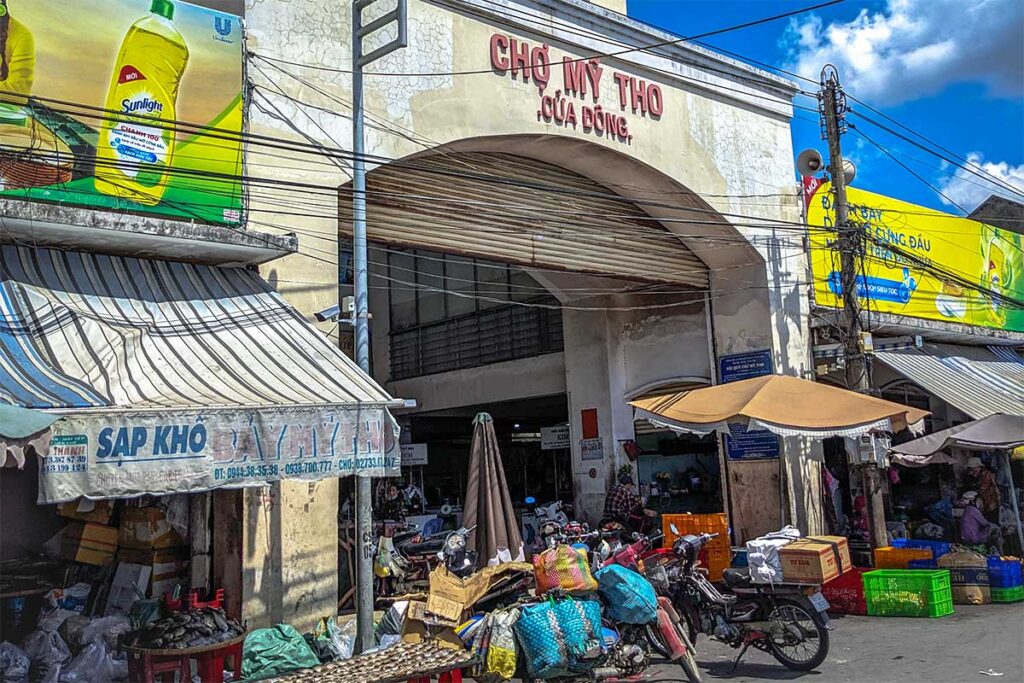
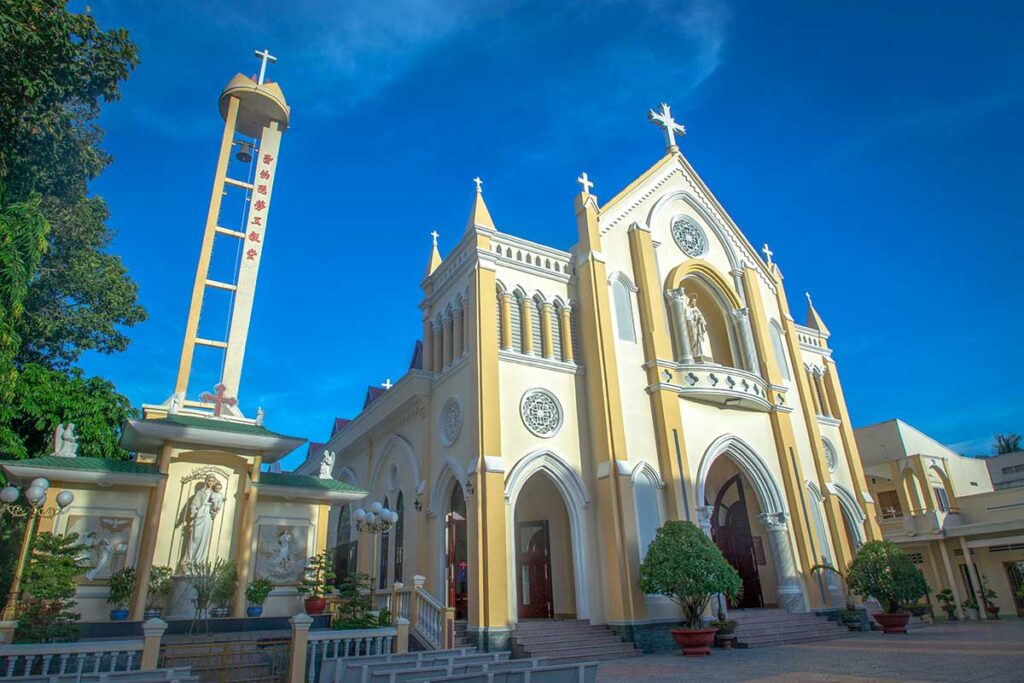
The town’s best stop is Cho My Tho, the central market, which comes alive early in the morning with fishmongers, fruit sellers, and snack stalls. Another small landmark is the My Tho Cathedral, a Western-style church built in the early 20th century. While not a major attraction, it’s worth a short stop combined with a late afternoon stroll along the river.
2. Vinh Trang Pagoda
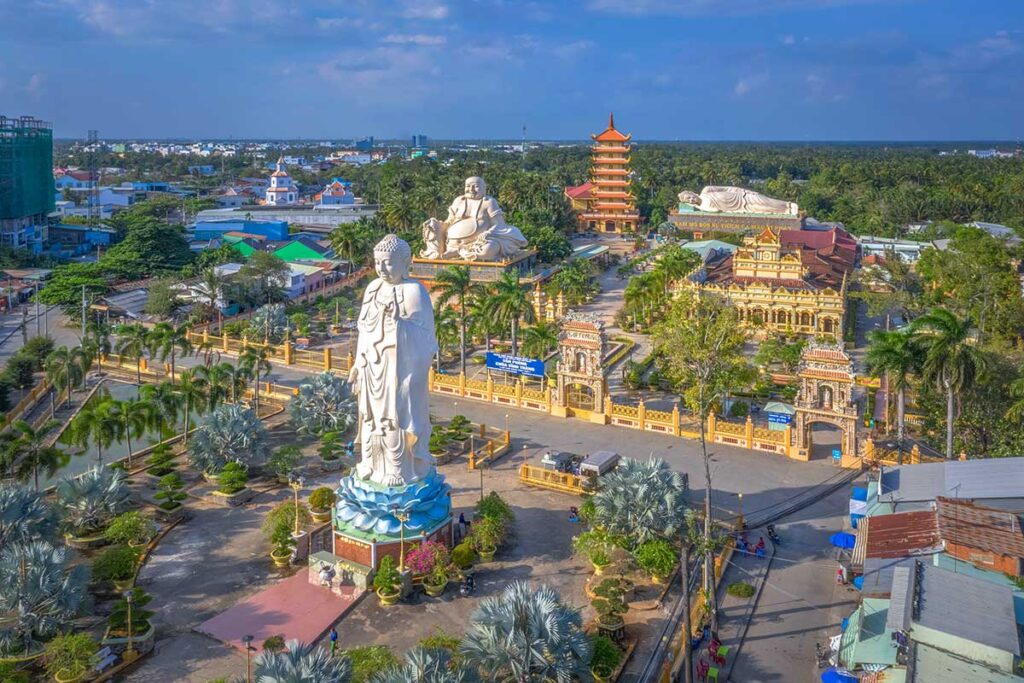
Vinh Trang Pagoda is the largest and most famous temple in Tien Giang Province. Built in the mid-19th century, it blends Vietnamese, Chinese, Khmer, and European architectural styles in a way that makes it stand out from other Mekong Delta temples. Its expansive gardens are dotted with bonsai, lotus ponds, and three large Buddha statues.
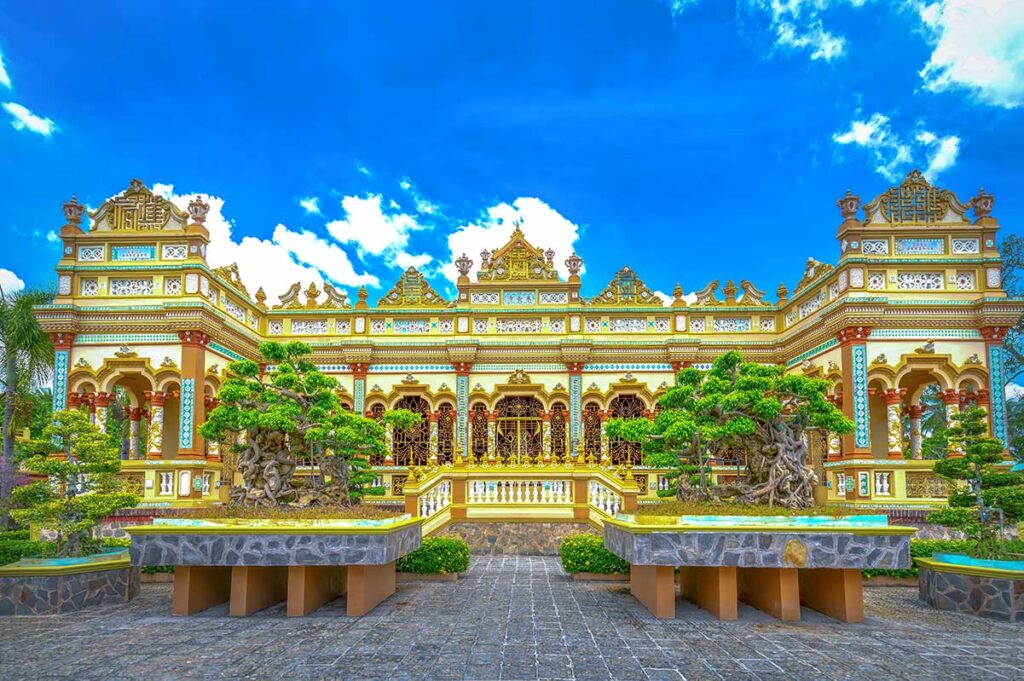
For visitors, it’s one of the easiest and most photogenic sights to include in a day trip. Entry is free, and most people spend 30–60 minutes here. The pagoda is located just a few kilometers from the city center, making it a natural stop before or after a boat tour.
3. The Four Islets (Dragon, Unicorn, Turtle, Phoenix)
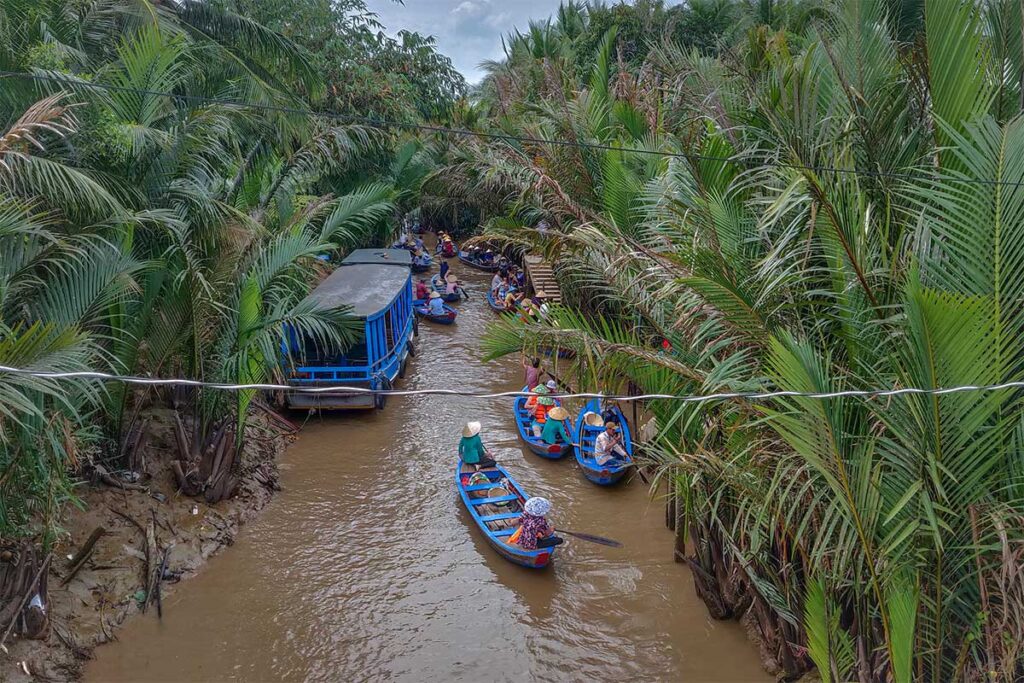
These small islands in the Tien River are the focus of most organized day tours from Ho Chi Minh City. Each islet has orchards, bee farms, and family-run workshops producing items like coconut candy or honey tea, and boat rides between them include short sampan journeys through palm-shaded canals.

Expect a curated experience with staged fruit tastings, folk music performances, and even optional horse carriage rides on Unicorn Island. The canals can be beautiful, but the stops feel touristy. If you want a quieter experience, ask your guide or boat operator to avoid the busiest circuits.
4. Beyond the islets: rural canals by boat & countryside by bicycle
The most enjoyable moments often happen away from the main tourist loop. Narrower backwater canals are shaded by nipa palms and feel more tranquil than the wide, busy river. If you arrange a private boat, you can usually request longer sampan rides through these smaller waterways.
Bicycling is another relaxed way to explore the countryside. The land here is flat, the roads are quiet, and many homestays lend out free bikes. Even short rides through fruit orchards and small hamlets provide a glimpse of rural life that feels more genuine than the packaged island tours.
5. Fruit orchards (seasonal tasting & u-pick)
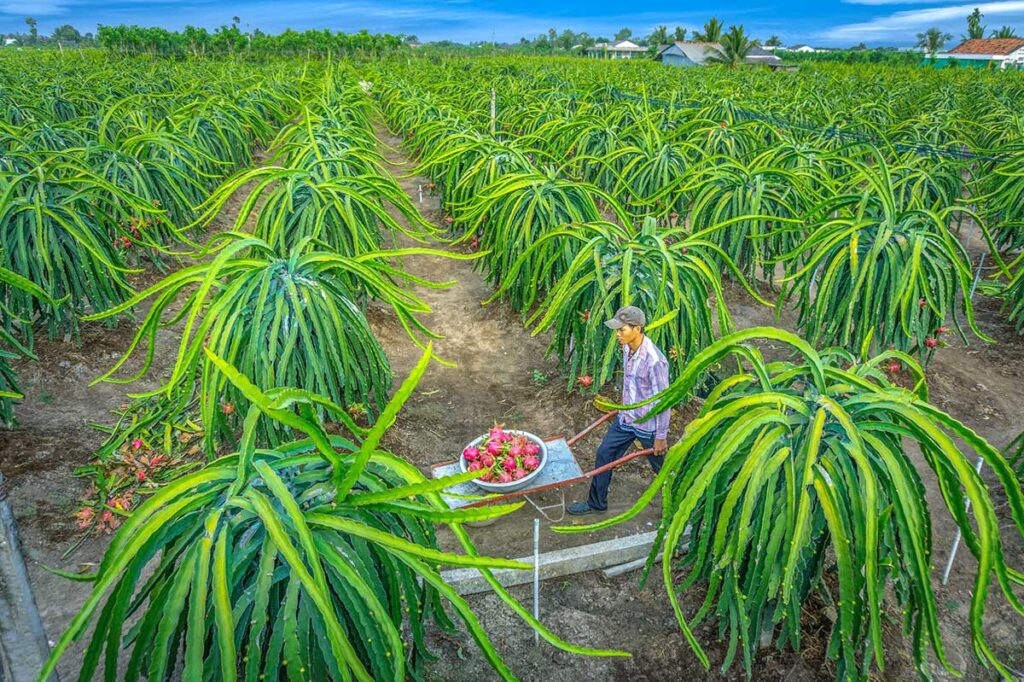
The area around My Tho and neighboring Ben Tre is famous for fruit farming, from longan and rambutan to dragon fruit and star apple. Some orchards open their gates to visitors, offering tastings, tea with honey, or a chance to pick fruit in season.
On group tours, these stops are often short and focused on sampling. If you visit independently or with a private guide, the experience can feel more personal and less rushed.
6. Cai Be area & the “faded” floating market

About 40 km upriver from My Tho, Cai Be offers a more spacious setting of canals, orchards, and small villages. It’s a good place for longer boat rides and cycling trips if you have more than a day.
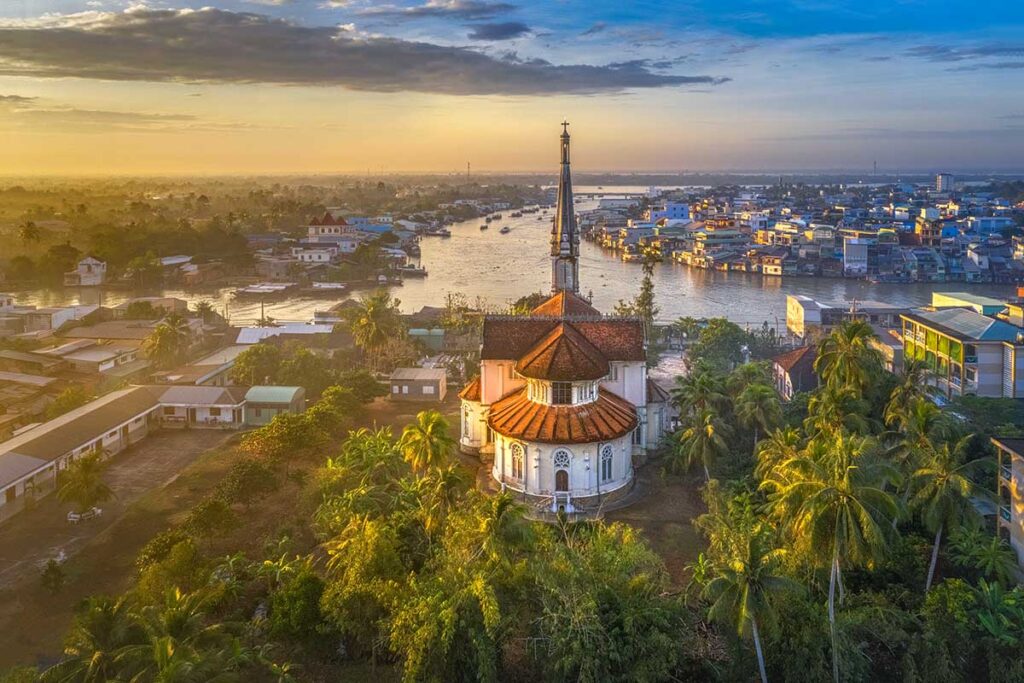
The once-bustling floating market here has declined to just a handful of wholesale boats. Don’t expect scenes like Can Tho, but the wider area is still scenic and worth considering if you prefer quieter countryside to the crowded islet tours.
7. Tan Thanh Beach (Go Cong)

Tan Thanh, about 50 km east of My Tho, is not a tropical beach but a long stretch of dark, muddy tidal flats. Locals come here for seafood, clam digging, and to stroll along the long pier that juts out into the water.
It’s best approached as a glimpse of local life rather than a place for swimming or sunbathing. Getting there requires a private car or motorbike, as public transport options are limited.
8. Dong Tam Snake Farm (not recommended)

The Dong Tam Snake Farm is a military-run research center for antivenom production that also functions as a zoo. It houses a large collection of snakes alongside crocodiles, bears, and turtles.
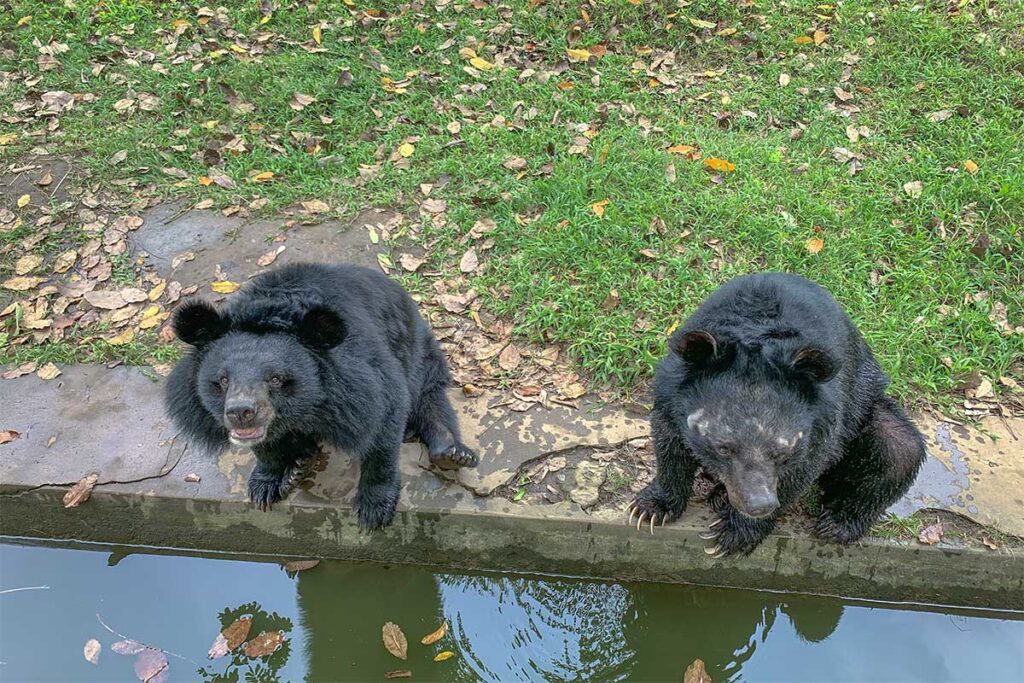
While sometimes listed as a tourist stop, many visitors are disappointed by the cramped enclosures and poor animal welfare. Unless you have a specific interest in its medical role, it’s better skipped.
9. Mekong river cruises starting/ending in My Tho
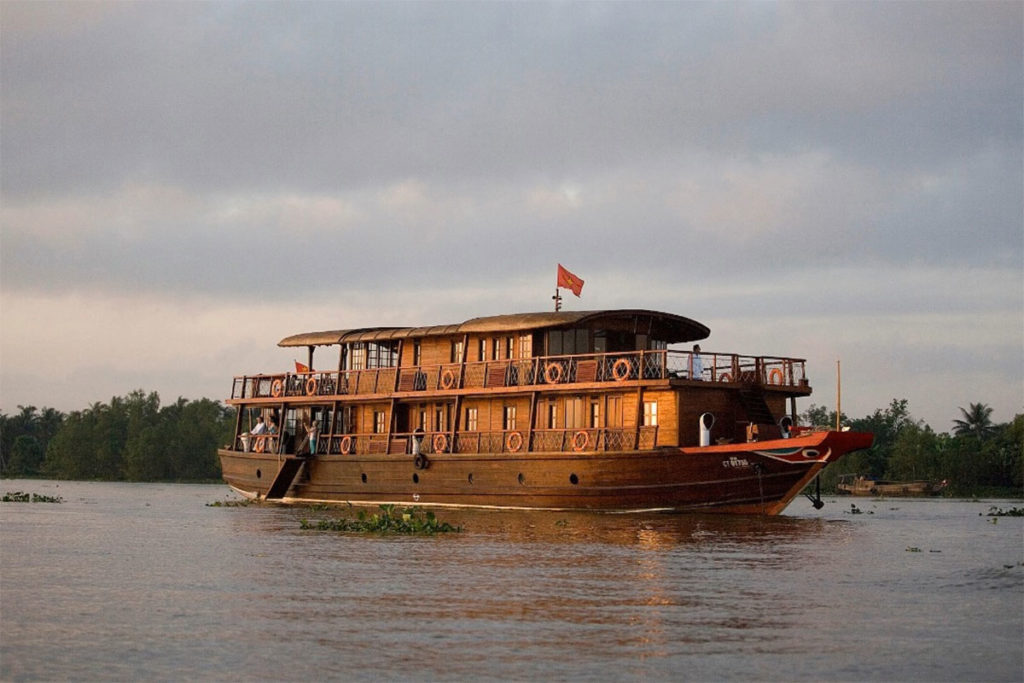
Several overnight Mekong cruises begin or end in My Tho, linking Ho Chi Minh City with destinations deeper in the Delta or even onward to Cambodia. Boarding here avoids backtracking to HCMC after a day trip.
If you’re considering a multi-day cruise, My Tho is a common embarkation point and connects easily to longer itineraries through Can Tho, Chau Doc, and Phnom Penh.
Is My Tho worth visiting?
My Tho is a convenient way to get a first taste of the Mekong Delta. The canals are attractive, the logistics are simple, and it can all be done in a single day from Ho Chi Minh City. At the same time, much of what you’ll see is set up for tourists, with stops that feel curated rather than spontaneous. If you want an easy introduction, it works well, but travelers seeking a more authentic experience may prefer other parts of the Delta.
Good alternatives
- Ben Tre – Known for coconut groves and quieter backwater canals, with more homestays and less tour-group traffic. Works as both a day trip and a relaxing overnight stay.
- Can Tho – A larger city that serves as a base for the Mekong’s last authentic floating markets, especially Cai Rang in the early morning. Offers both urban comforts and rural life nearby.
- Chau Doc – Best for multi-day trips, combining the Tra Su wetlands, Sam Mountain, and a distinct mix of Vietnamese, Khmer, and Cham culture near the Cambodian border.
- Sa Dec – A smaller riverside town with flower villages and colonial-era villas, offering a gentler, less touristy atmosphere.
How to get there
Day tours from Ho Chi Minh City
Most travelers visit My Tho on an organized day trip from Ho Chi Minh City. These tours are the fastest and least effort option, usually combining a boat ride, stops on the nearby islands, and a visit to Vinh Trang Pagoda. The experience is often curated with set shop visits, but some operators offer more flexible itineraries that include longer time on small canals or routes that feel less crowded. If you only have a single day, this is the simplest way to see the area.
Classic Mekong Delta Day Tour (My Tho)
- Experience: Sampan boat ride, orchard visit, and coconut candy-making in My Tho.
- Highlights: Vinh Trang Pagoda and tastings of fruit and honeybee tea.
Independent travel by bus or car
My Tho lies about two hours from Ho Chi Minh City via the expressway. Frequent buses and limousine vans depart throughout the day, and rides are inexpensive. On arrival, you can get around by taxi or Grab for short distances, or arrange boats directly at the pier. A private car with driver is the most convenient option if you want to add stops on the way or continue deeper into the Mekong Delta.
Tips for traveling to My Tho
Best time to visit
You can visit My Tho year-round. The dry season (November–April) offers clearer skies and easier logistics, while the wetter months (May–October) bring short afternoon showers that rarely disrupt plans. From late August to November, higher water levels add atmosphere on the canals and coincide with peak fruit harvests.
Staying in/near My Tho
Most people visit on a day trip from Ho Chi Minh City, but staying overnight lets you enjoy a quieter pace. The best options are outside the city center in garden homestays or riverside lodges, many with free bicycles to explore the countryside.
Food & local dishes
Local dishes are a highlight, with Hu Tieu My Tho noodle soup topping the list. Other specialties include elephant-ear fish rolled into spring rolls, seasonal tropical fruits, and simple seafood meals if you venture to Tan Thanh Beach.
Getting around independently
- Taxi/Grab – Convenient for short hops within town.
- Boats – No public ferries; all trips are by tourist boat (private or group). If you prefer quieter canals, ask the skipper to steer away from the standard shop circuit.
- Cycling – Great for short countryside loops, often with free bikes from homestays.
- Scooter – Handy for reaching pagodas, markets, or Ben Tre if you’re comfortable driving.
What to bring & prep
Pack sun protection (hat, sunglasses, sunscreen) and a light rain layer for sudden showers. Insect repellent is useful near the water, and modest clothing is expected for pagodas. Bring some cash for snacks, fruit tastings, or small purchases during your trip.
